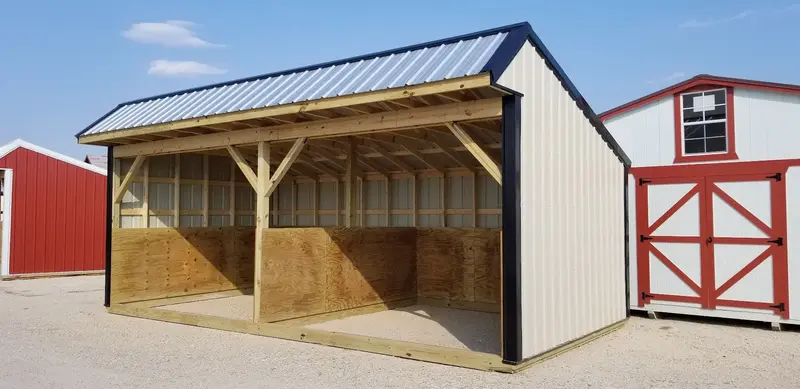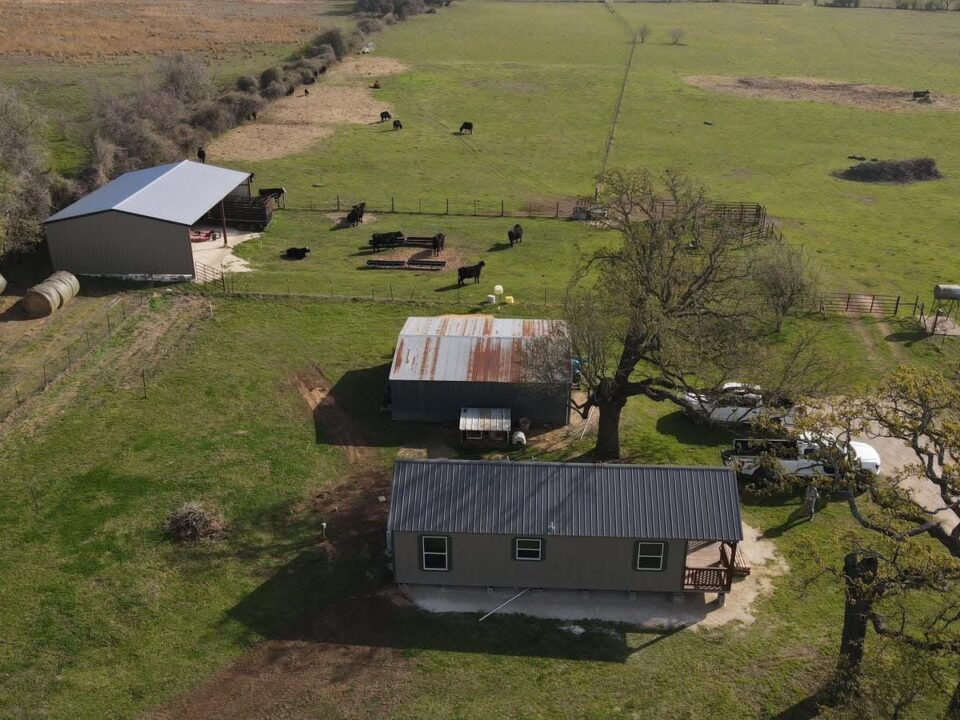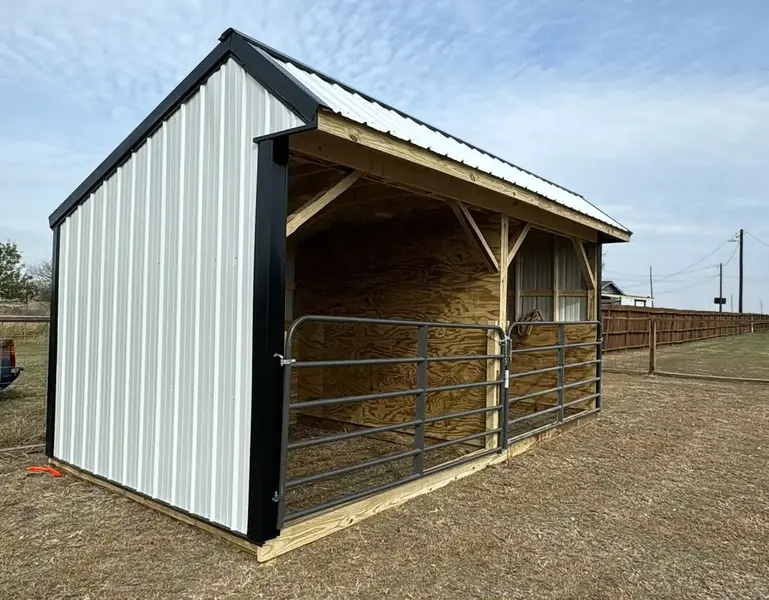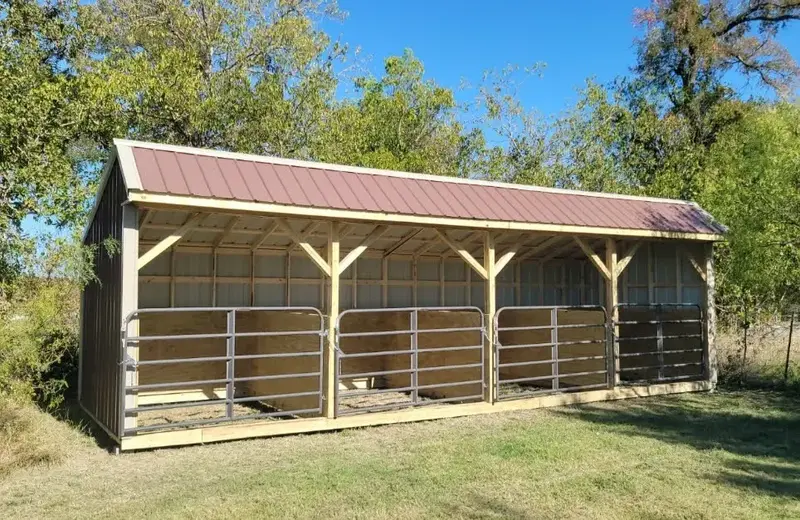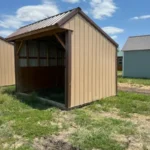
Small Animal Shelter Designs for Hobby Farms | 2025 Guide
July 4, 2025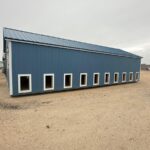
Custom Dog Kennels for 2025 | Backyard Shelter Ideas
July 6, 2025🧱 Best Flooring Options for Animal Shelters in Harsh Climates
When building an animal shelter, it’s easy to focus on the walls and roof—but the floor is just as important. A poorly chosen floor can turn into a muddy mess, trap odors, harbor bacteria, or even injure your animals. Especially in places like Texas, where extreme heat, flash floods, and humidity collide, you need a flooring solution that works hard year-round.
The good news is there’s no one-size-fits-all answer. The best animal shelter flooring depends on the animals you raise, your local climate, and how much time and labor you want to invest in upkeep. Let’s walk through your top options and how to choose the right one.
🌧️ Why Shelter Flooring Matters
A good floor does more than support your animals—it protects their health. It keeps hooves, paws, or claws dry and clean. It reduces slipping, discourages burrowing pests, and makes cleanup faster. Over time, the right flooring will even help extend the life of your entire shelter by preventing water damage, rot, and mold buildup.
In hot climates, certain materials reflect heat and stay cooler underfoot. In wet regions, drainage and drying time are key. And in any area, sanitation is non-negotiable. Choosing the wrong floor can lead to disease, injury, or constant maintenance headaches.
🪵 Option 1: Treated Wood Flooring
Treated wood floors are common in raised shelters, especially for small animals like chickens, rabbits, or goats. Elevating the structure off the ground helps prevent flooding and gives you a dry, cleanable surface inside.
This type of floor is relatively warm in winter and easy to clean with pine shavings or rubber mats. For extra protection, many farmers add waterproof liners or epoxy coatings. Just be sure to choose pressure-treated lumber that resists rot, moisture, and insects.
🪨 Option 2: Gravel or Crushed Stone Base
For open-air shelters like loafing sheds or mobile pens, gravel is a great choice. It allows water to drain quickly, keeps hooves from sinking into mud, and naturally reduces odor buildup. Crushed granite or pea gravel also helps control pests by eliminating soft soil burrows.
To install it correctly, lay a layer of landscape fabric underneath and spread the gravel thick enough to level the area. Pair it with rubber mats in resting zones for comfort and cleanliness.
🪟 Option 3: Concrete Slab
Concrete is durable, level, and long-lasting—ideal for permanent barns, kennels, or shelters with frequent wash-downs. It’s easy to sanitize and can be poured with a slight slope to help with drainage.
In hot climates, concrete can heat up, so add shade or rubber stall mats to protect animals’ feet. In cold weather, it can get slick or freeze, so textured surfaces and straw bedding may be necessary.
Although it’s more expensive upfront, concrete floors pay off in reduced labor and increased shelter life span.
🧼 Option 4: Dirt Floors with Bedding
For low-budget or temporary setups, packed dirt can work—but it must be managed carefully. Without protection, dirt turns to mud, harbors parasites, and becomes impossible to clean thoroughly.
The key to success with dirt floors is regular bedding maintenance. Add straw, wood shavings, or sand on top, and change it out often. This solution works better in dry climates and should be paired with raised sleeping areas or rubber stall mats for extra hygiene.
🧠 Choosing the Right Floor for Your Animals
Goats and sheep need dry, sturdy footing to avoid hoof rot. Horses prefer textured or matted concrete to protect their legs. Chickens benefit from elevated wood or sand-based floors that reduce mites and odors. Dogs do well with coated concrete and raised platforms that offer traction and cleanliness.
For mixed-use shelters, combining materials can provide the best of all worlds. A gravel base with rubber mats, or a wooden floor with removable trays, offers flexibility, sanitation, and comfort—especially in variable weather conditions.
🛠️ Maintenance and Cost Considerations
Each flooring type comes with different maintenance needs. Concrete may need power washing, gravel needs occasional leveling, and wood requires inspection for damage. Think about what’s realistic for your schedule and the seasons.
In terms of cost, dirt is cheapest but most labor-intensive. Gravel and treated wood are moderate, while concrete represents a higher investment with a longer return. Choose based on how permanent your shelter is—and how much time you’re willing to spend on upkeep.
🔗 Internal & External Resources
Explore other shelter design considerations in Animal Shelter Ventilation, Loafing Sheds for Cattle | Wolf Valley Buildings, and Choosing the Right Animal Shelter Size for Your Animals
For flooring specs and farm-tested tips, check out Purdue Extension’s Livestock Flooring Guide.
🐾 The Foundation of Healthy Animals
The best animal shelter flooring protects more than just the bottom of your barn—it safeguards the health and comfort of every animal you care for. Whether you’re housing goats, chickens, dogs, or horses, a solid floor reduces stress, keeps disease at bay, and saves you time.
👉 Ready to upgrade your shelter from the ground up? Contact Wolf Valley Buildings and let us help you choose a floor—and a structure—that stands up to every season.

